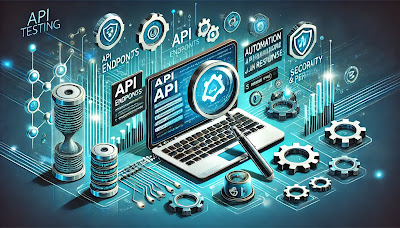Crafting Code That Endures: A Guide to Clean Code Principles
To build automation framework that is robust, maintainable, and easy for
teams to work with, we need to strive for clean code. Clean code refers
to source code that is easy to read, understand, and maintain. It adheres to
established coding conventions and principles, resulting in code that is
efficient, less prone to errors, and adaptable over time. It contributes to a
positive experience and helps teams collaborate more effectively.
Let's dive into the characteristics and principles
that define clean code.
The Hallmarks of
Clean Cod
Clean code possesses several key characteristics:
- Readable:
The code should be easy for other testers (or your future self) to
understand.
- Simple:
It avoids unnecessary complexity, making it easier to grasp and maintain.
- Consistent:
A uniform coding style and naming conventions are applied throughout the
codebase.
- Efficient:
While readability comes first, clean code is also optimized for
performance without sacrificing clarity.
- Well-Structured:
Code is organized logically, with proper modularization and separation of
concerns.
- Testable:
Clean code is designed to be easily testable.
- Minimal
Dependencies: Components have limited
dependencies on each other, enhancing modularity and reducing risks.
- Comments:
Use comments judiciously – they should explain why something is
done, not merely restate what the code does. Strive for
self-explanatory code.
Essential Rules and
Principle
Achieving clean code involves following specific
rules and design principles:
Readability Focus:
- Meaningful
Names: Choose names for variables, methods,
classes, and other elements that are descriptive and clearly convey their
purpose. Avoid abbreviations or cryptic names. Variable, method,
and class names should be as short as possible and as long as necessary.
- Consistent
Formatting: Adhere to a consistent style guide
for indentation, spacing, and naming conventions. This ensures visual
clarity. Adding an empty line between different contexts in code can also
improve readability.
Modularity and Structure:
- Small,
Focused Functions: Break down large tasks into smaller
functions, each with a clear, single responsibility. This improves
organization, testability, and reusability.
- Single
Responsibility Principle (SRP): This is a
cornerstone principle. Each class or module should have only one,
well-defined responsibility. This promotes cohesion and reduces
coupling between different parts of the code.
Maintainability Principles:
- DRY
(Don't Repeat Yourself): Avoid code
duplication. Use functions, abstractions, or design patterns to
encapsulate common logic, minimizing redundancy and simplifying
maintenance.
- Loose
Coupling: Design classes and modules to have
minimal dependencies on each other. This makes them easier to test,
modify, and reuse.
Core Design Principles & Patterns:
- SOLID
principles: Follow SOLID principles – Single
Responsibility Principle (SRP), Open-Closed Principle (OCP), Liskov
Substitution Principle (LSP), Interface Segregation Principle (ISP), and
Dependency Inversion Principle (DIP) – to create well-structured and
maintainable code.
- Design
Patterns: Utilize established design patterns
to solve common programming problems in reusable and maintainable ways.
Additional Practical Tips:
- Appropriate
Data Types: Choose suitable data types for
variables to ensure data integrity.
- Handle
Errors Gracefully: Implement proper error handling
mechanisms to catch and manage exceptions, preventing crashes and
providing user feedback.
- Refactor
Regularly: Continuously refactor code to
improve its structure, readability, and maintainability as the project
evolves.
- Follow
Coding Conventions: Adhere to established coding conventions
- Use
Code Analysis Tools: Employ tools to identify potential
issues, style violations, and areas for improvement. SonarCube is
mentioned as a static code analyzer tool. Use it if available.
- Collaborate
and Review: Engage in code reviews with peers
to gain different perspectives and identify improvements.
Why Clean Code
Matters
Beyond the direct benefits mentioned in the
sources like improved maintainability, testability, and collaboration, adopting
clean code principles has broader impacts.
- Reduced
Debugging Time: Clearer, simpler code is inherently
easier to debug when issues arise.
- Easier
Onboarding: New team members can understand the
codebase faster, becoming productive more quickly.
- Lower
Technical Debt: By maintaining quality from the
start, you reduce the accumulation of "technical debt" – the
cost of fixing poorly written code later.
- Improved
Team Morale: Working with a clean,
well-organized codebase is generally a more pleasant and productive
experience for developers.
Clean code also helps prevent common "code
smells" – indicators of potential problems in code, such as overly long
methods, large classes, or excessive coupling.
Conclusion
Writing
clean code is more than just an aesthetic choice - it’s a critical discipline
that drives reliability, maintainability, and effective collaboration in
software development. By consistently
applying key practices - such as
meaningful naming, modular design, adherence to SOLID principles, and
maintaining a strong focus on testing and refactoring - testers can build
automation codebases that are robust, scalable, and future-proof. Leveraging
tools like SonarQube
and participating in regular code reviews further reinforces code quality and
promotes continuous improvement. Make
clean coding a non-negotiable standard in your test automation process - it’s
an investment that pays dividends throughout the project lifecycle.
Explore the blog posts below to learn key architectural principles:
The
Singleton Pattern in Test Automation: Ensuring Consistency and Efficient
Resource Management
Designing
an Automation Framework with SOLID Principles






Comments